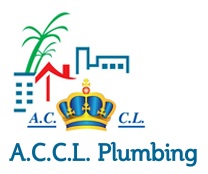Access to clean and safe drinking water is essential for human health and well-being. However, with growing concerns about water pollution, contamination, and infrastructure, ensuring the quality of drinking water has become a significant challenge. In this article, we’ll explore the importance of water quality, common contaminants, and effective filtration methods to ensure clean and safe drinking water.
The Importance of Water Quality
Water quality is crucial for human health, as contaminated water can lead to a range of health problems, including:
1. Waterborne diseases: Consuming contaminated water can lead to waterborne diseases like cholera, typhoid, and dysentery.
2. Long-term health effects: Exposure to certain contaminants, like heavy metals and chemicals, can have long-term health effects, including cancer, neurological damage, and reproductive problems.
Common Contaminants in Drinking Water
Drinking water can be contaminated with a range of substances, including:
1. Bacteria and viruses: Microorganisms like E. coli, Salmonella, and Rotavirus can cause waterborne diseases.
2. Heavy metals: Heavy metals like lead, mercury, and arsenic can have serious health effects.
3. Chemicals and pesticides: Chemicals like atrazine, glyphosate, and other pesticides can contaminate water sources.
4. Disinfection byproducts: Disinfection byproducts (DBPs) like trihalomethanes (THMs) and haloacetic acids (HAAs) can form during water treatment.
Effective Filtration Methods
There are several effective filtration methods that can remove contaminants and ensure clean and safe drinking water:
1. Activated carbon filtration: Activated carbon filters can remove chlorine, lead, volatile organic compounds (VOCs), and other contaminants.
2. Reverse osmosis (RO): RO systems use a semipermeable membrane to remove dissolved solids, heavy metals, and other contaminants.
3. Ultraviolet (UV) light disinfection: UV light can kill bacteria, viruses, and other microorganisms.
4. Ion exchange systems: Ion exchange systems can remove heavy metals and other inorganic compounds.
Choosing the Right Filtration System
When choosing a filtration system, consider the following factors:
1. Contaminant removal: Look for systems that can remove a wide range of contaminants, including bacteria, viruses, heavy metals, and chemicals.
2. Certification: Choose systems that are certified by reputable third-party organizations, like NSF International or the Water Quality Association.
3. Maintenance and replacement: Consider the maintenance and replacement requirements of the system.
Conclusion
Ensuring clean and safe drinking water is crucial for human health and well-being. By understanding common contaminants and effective filtration methods, individuals can take steps to protect their drinking water and ensure a healthy and safe water supply. Whether you’re using a pitcher filter, faucet-mounted filter, or whole-house filtration system, investing in water filtration is a critical step in protecting your health and well-being.

